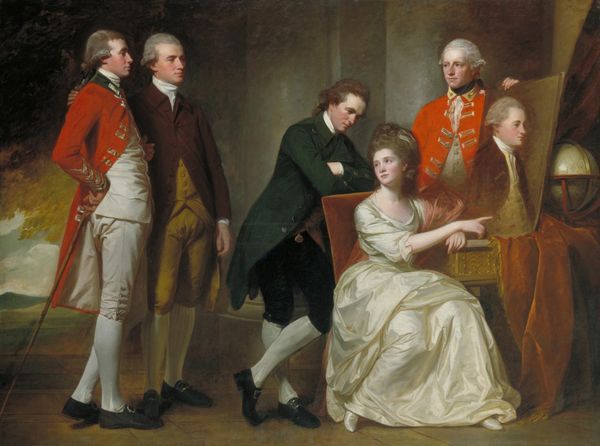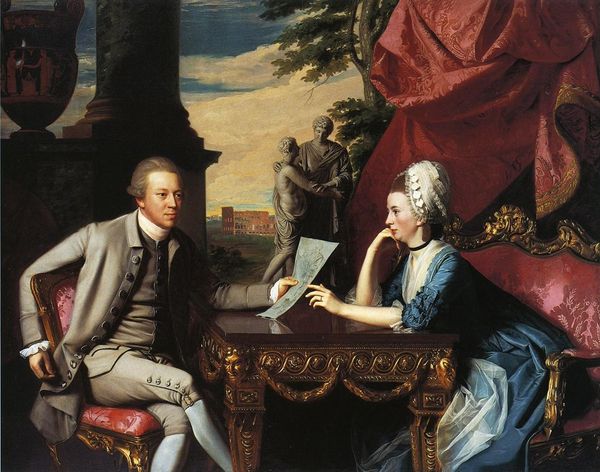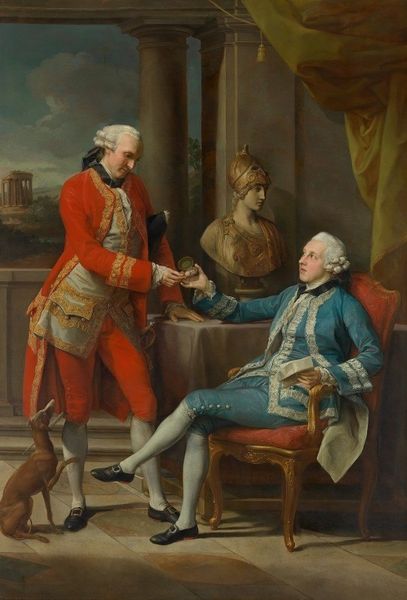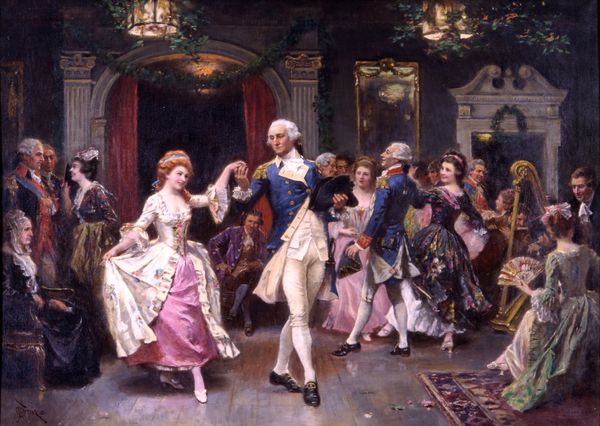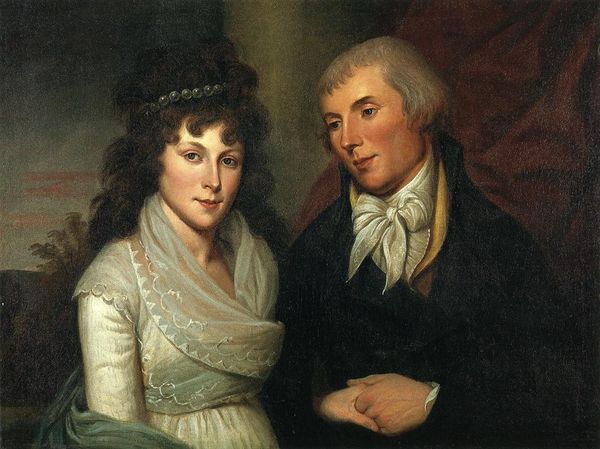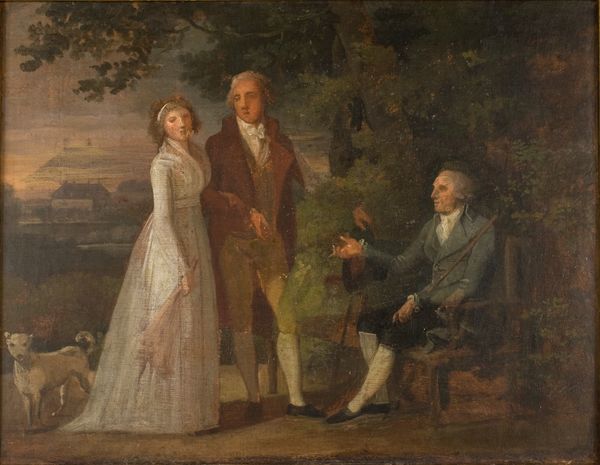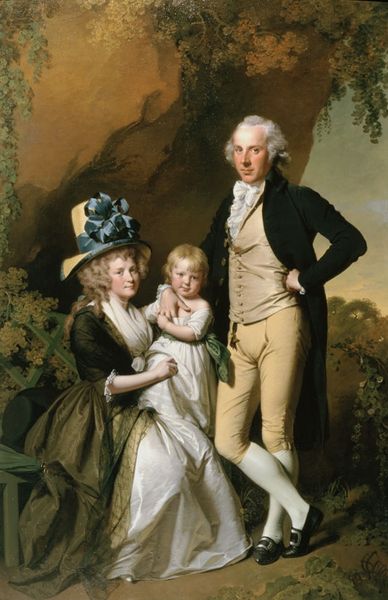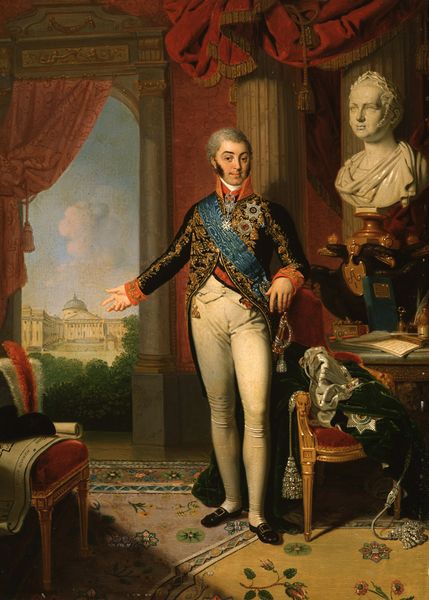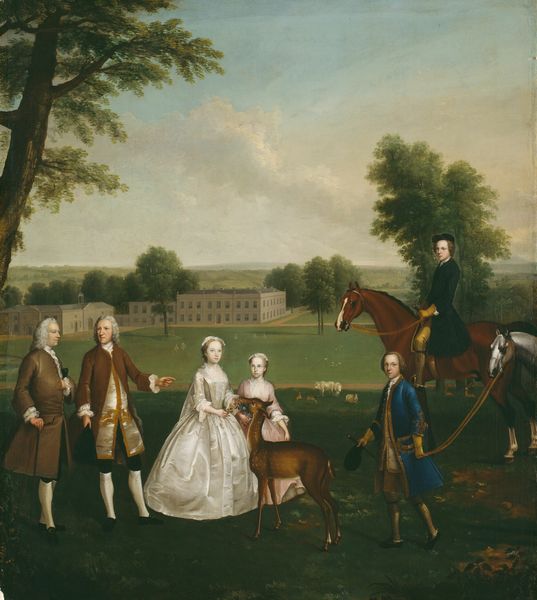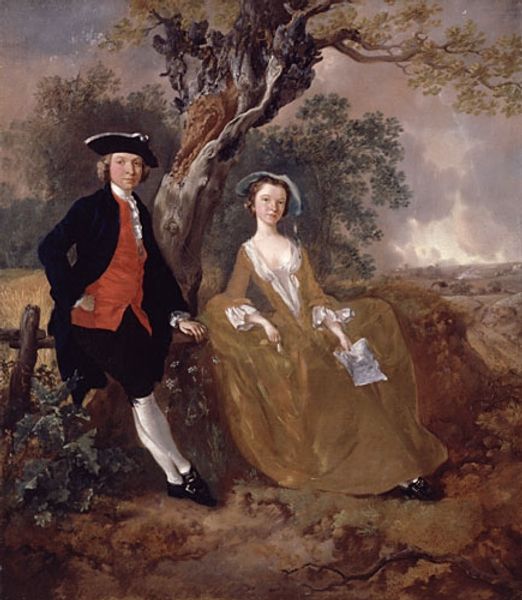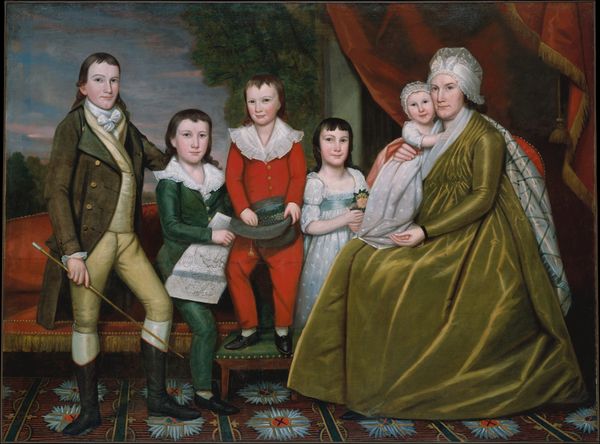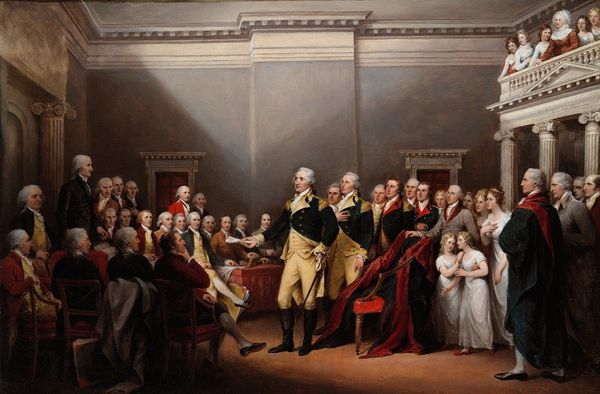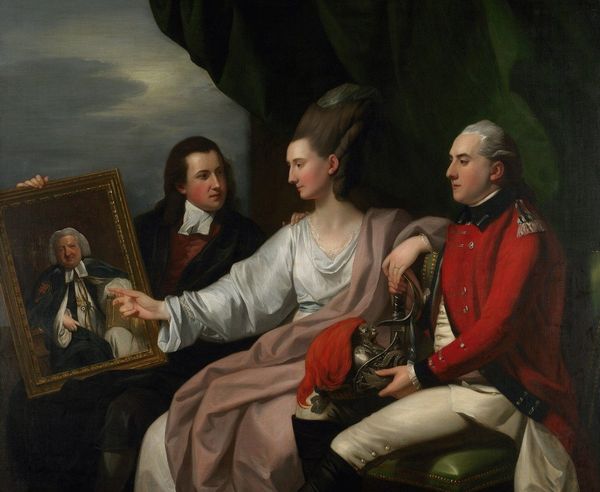
painting, oil-paint
#
portrait
#
neoclacissism
#
painting
#
oil-paint
#
history-painting
Copyright: Public domain
Editor: Here we have Ralph Earl’s "Oliver and Abigail Wolcott Ellsworth," painted in 1801. It’s an oil painting, a double portrait. There's such formality in their pose and expressions! What jumps out at you when you consider the making of this piece? Curator: What I find striking is the conspicuous display of wealth through the materials depicted and the very act of commissioning such a large portrait. Look at the textiles, from Abigail’s shimmering satin dress to the patterned carpet and heavy drapery. How do these choices speak to their status as elite members of society? Editor: It's interesting you point out the textiles. The fabric seems to have weight and volume. What does that say about production and labor during that time? Curator: Exactly! We have to consider the labor involved in producing such elaborate fabrics, both the raw materials like cotton or silk and the human effort needed to weave them. Consumption, especially conspicuous consumption, is at the heart of this image. The Ellsworths are essentially advertising their access to a complex network of trade and manufacturing. Even the oil paints themselves! Where do these materials come from? How were they processed and by whom? Editor: So it's less about the individuals and more about the system that enables them? Curator: It is both. But thinking materialistically, focusing on what things are *made of*, shifts the emphasis to include the often-invisible networks of labor and resources that shape even seemingly straightforward portraits like this one. Does examining the materials change how you understand the painting now? Editor: It definitely complicates it. I was initially drawn to the faces and the historical aspect, but now I see the whole thing as an artifact of a particular economic system. I'll never look at fabric the same way again! Curator: Exactly. Focusing on materiality opens up new avenues of inquiry into art's relationship with labor and power.
Comments
No comments
Be the first to comment and join the conversation on the ultimate creative platform.
